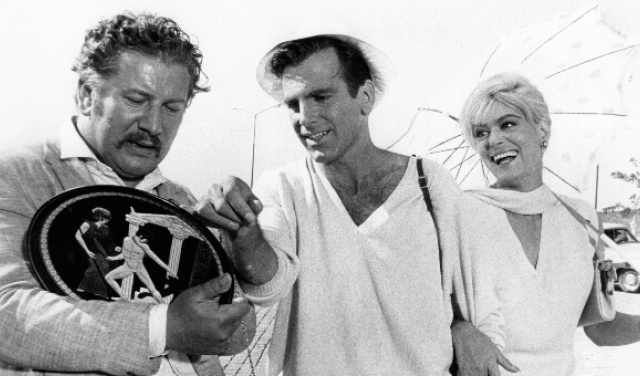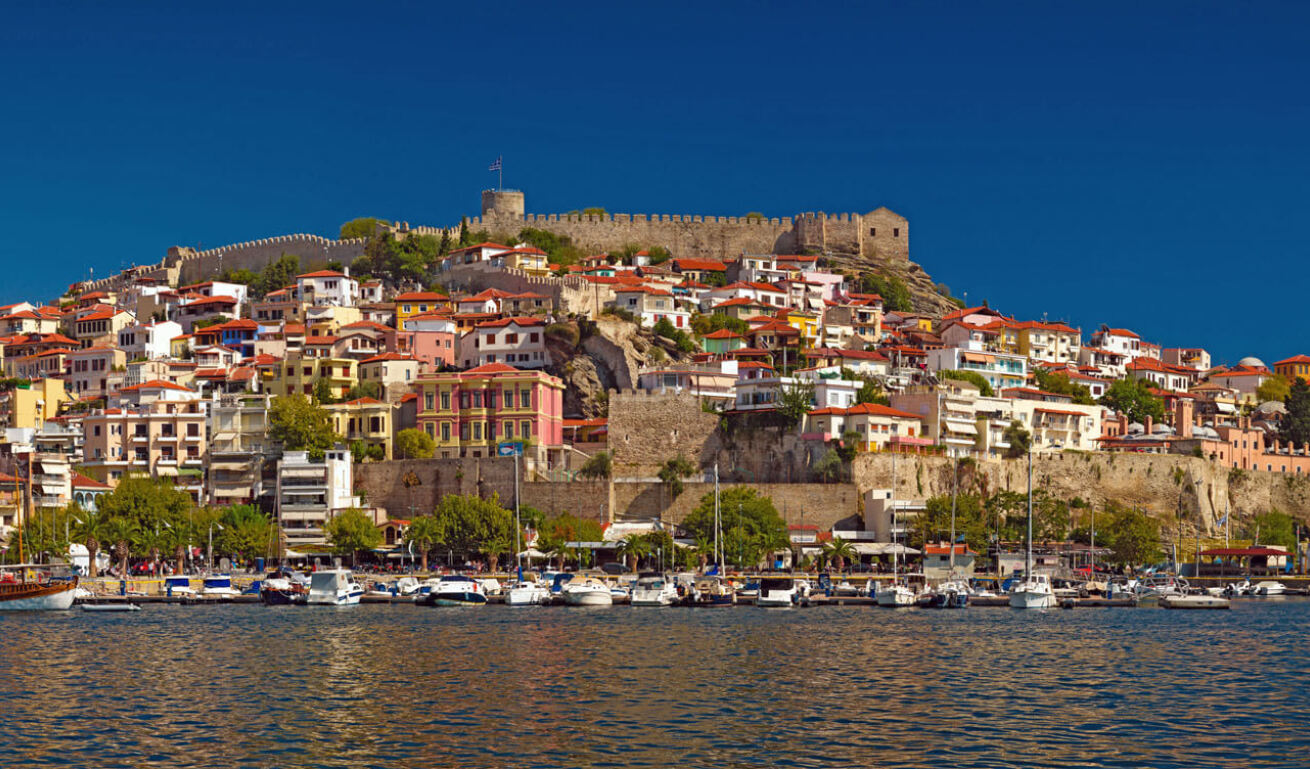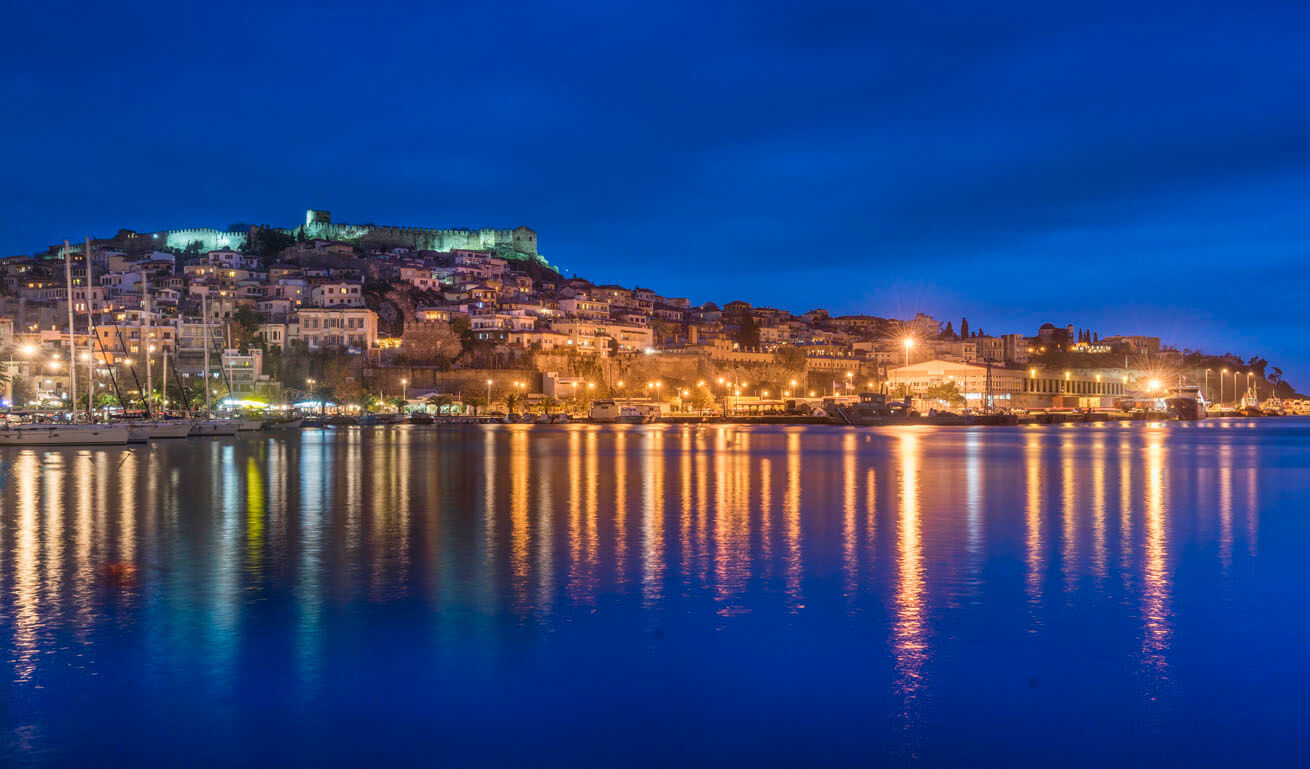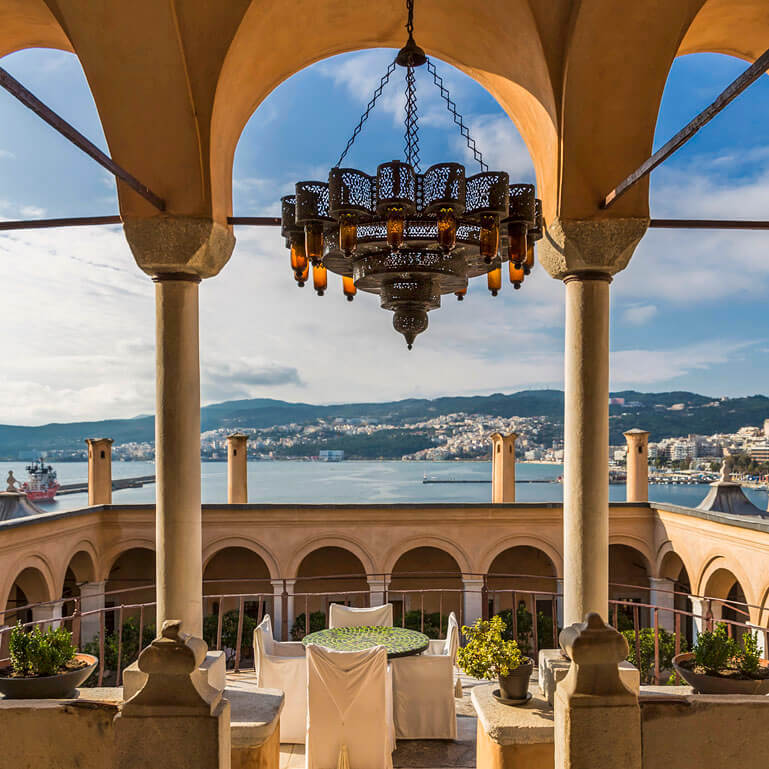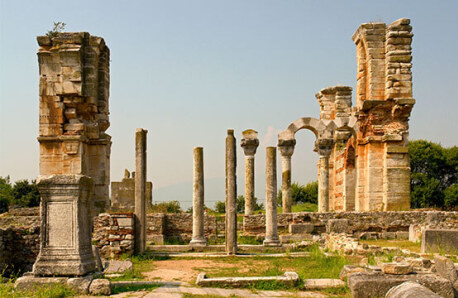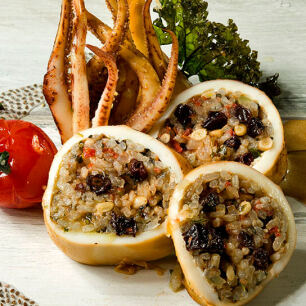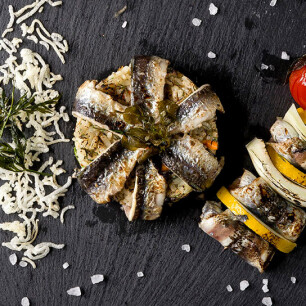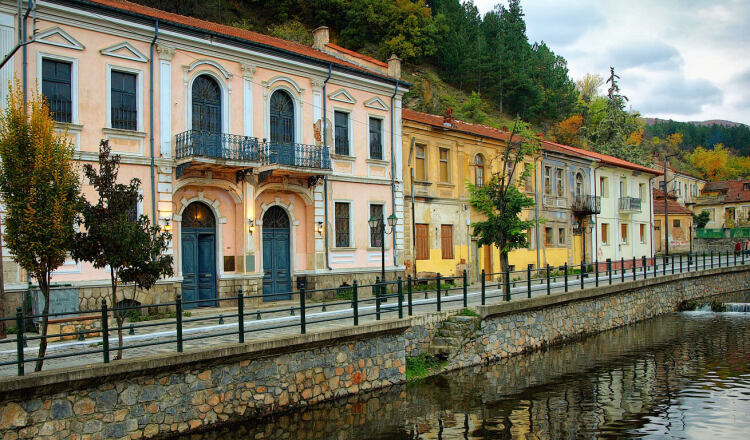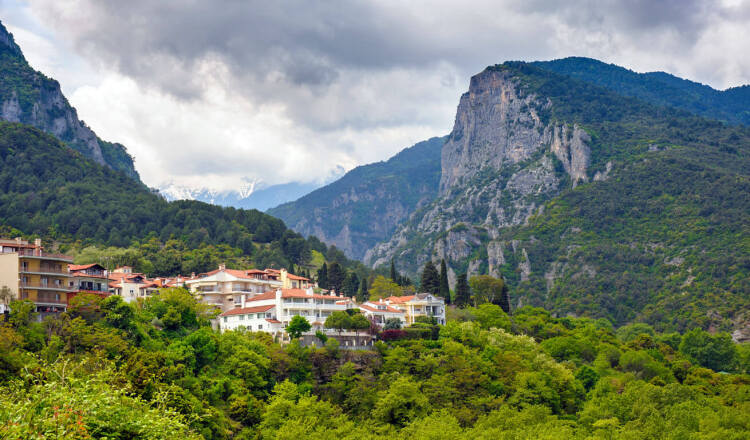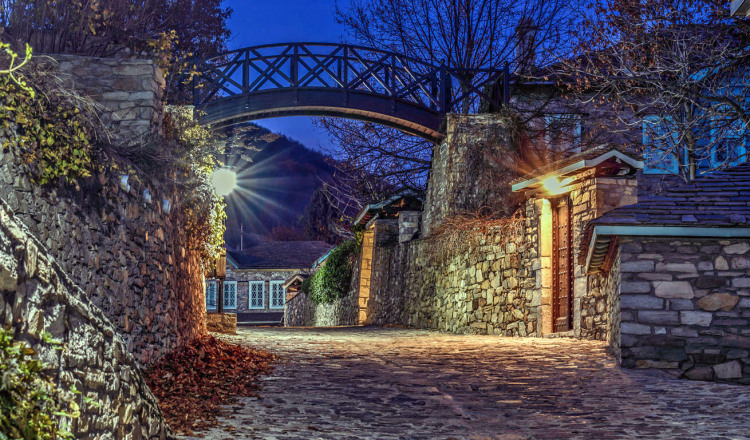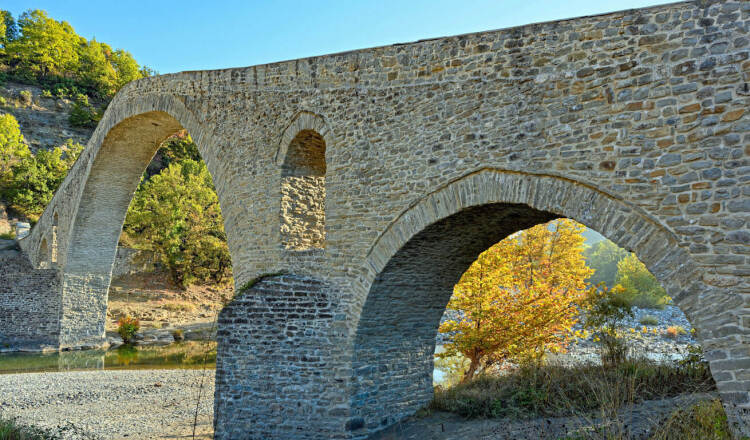The Old Town
Start your tour around the town from Panagia neighbourhood (Palia Poli - Old Town), which stretches out on the peninsula with narrow streets and traditional macedonian style buildings. The 15th c. Castle, which was built after the destruction of the Byzantine acropolis in 1391, dominates the area and has an exquisite sea and town view. Its interior is used as a venue hosting cultural events. Stop by the historical Imaret building (1817), donated by Mohammed Ali (1769-1849) who was born in the city and later became an Egyptian ruler. It started off as a seminary-poorhouse, later used as a refugee house and is nowadays a luxury hotel.
At a short distance you will find the square with the bronze statue of Mohammed Ali - located between his family house - a beautiful Ottoman style building, built in the late 18th century, surrounded by a garden - and the church of Panagia (1965). Don’t miss the Khalil Bey mosque (Old Music) and the seminary (medrese) of the 17th c. By the seaside the fortification that encloses the peninsula dates back to mediaeval times. Follow Isidorou, Anthemiou and Lambrou Kotsoni streets and arrive under the imposing Aqueduct. The landmark of Kavala also known as Kamares (Arches) has 60 arches and stands 25m tall. It was built during the reign of Suleiman the Magnificent in 1550 and repaired by Mohammed Ali in the 19th c. to meet the needs of the city in water supply.
The City
The neoclassical buildings and tobacco warehouses are reminders of Kavala’s bourgeois past. The town's tobacco Museum exhibits numerous black and white pictures of the tobacco workers who lived here in the past. The social epicentre of the city starts at Eleftheria Square, follow Megalou Alexandrou (Alexander the Great) pedestrian street, which ends up at Kapnergati square, where you will come across a large number of cafes and bars, and Omonia Street where you will enjoy shopping. The tobacco warehouse and Museum of the National Tobacco Organisation is found on Konstantinou Paleologou Street. Don’t miss the chance to visit the Museum and take a journey through time, look at objects used for cultivating and producing tobacco and how commerce was handled when Kavala was the largest tobacco production centre in the country. Opposite of the Museum is the tobacco warehouse. The ottoman neoclassical and baroque architectural style block, built around 1900-1903, is used as a venue nowadays, hosting cultural events.
Stop by Agios Nikolaos church, which used to be a mosque. It is located in the old neighbourhood of Agios Nikolaos, near Eleftheria square. Behind the church there is a mosaic monument representing the first steps of Apostle Paul as well as the base of pillar remains.
A walk by the city’s port is a must; take pictures of the moored sailboats and fishing boats, the palm trees and cobblestone paths alongside the more contemporary buildings. Eat at one of the fish tavernas or drink a beverage at the numerous cafes along Ethnikis Antistaseos seaside street. Cross the Municipal Park directly beneath Kyprou Street and see the wonderful statue of winged Nike but more importantly this is where the most significant structures are located; the City Hall (1895), a miniature Hungarian tower, which used to belong to a Hungarian tobacco merchant. The Great Club building (1909). The Wix Building built in 1906 and lived in by the German Baron Adolf Wix, which today houses the Municipality’s offices. The Tokos building (1879) is occupied by the Kavala -Thassos Ephorate of Antiquities. Go by the lighthouse and the traditional Karnagio (dockyard), then head east to the harbour at the old Sfageia (slaughterhouses) where you can enjoy fresh fish or meat in one of the eateries with a beautiful view to the sea.
The Lighthouse district is a great place to roam around on the peninsula of Panagia; drink in the view, enjoy amazing sunsets and weather permitting you might even see the island of Thasos, the Athos peninsula on the west and the beach of Keramiti on the east. If you like lighthouses - explore all three in Kavala - head down from the steps next to the Primary School towards the green lighthouse on the pier, then turn back and follow the coastal wall of the old town, pass the port and the palm trees and end up at the red lighthouse of the smaller pier.
This charming seaside city has many more sights to discover. Picturesque ports and beaches await you at a short distance such as Palio, Nea Iraklitsa, Nea Peramo and more. Visit the archaeological site of Philippi, a UNESCO World Heritage Monument, and Mt Paggaio where you will come across Byzantine monasteries, traditional villages and lush nature.
The neighbourhoods of Agios Ioannis and Agios Pavlos are also worth exploring not only for their charm but for their churches as well. At the entrance of the city of Kavala make a point of visiting the churches of Agios Syllas and Agios Panteleimonas. Last but not least don't miss the Archaeological Museum, which showcases prehistoric finds from the surrounding area (Kavala, Amfipoli, Aisyme etc).
